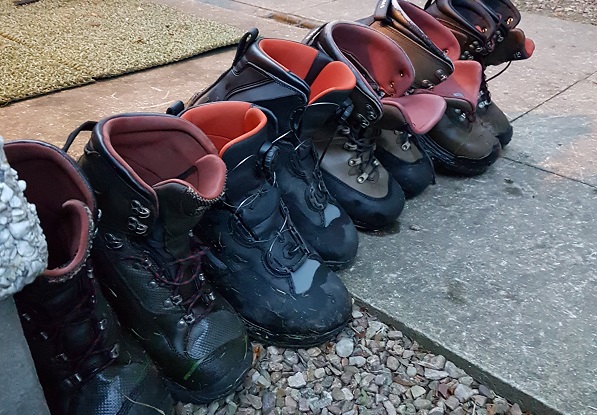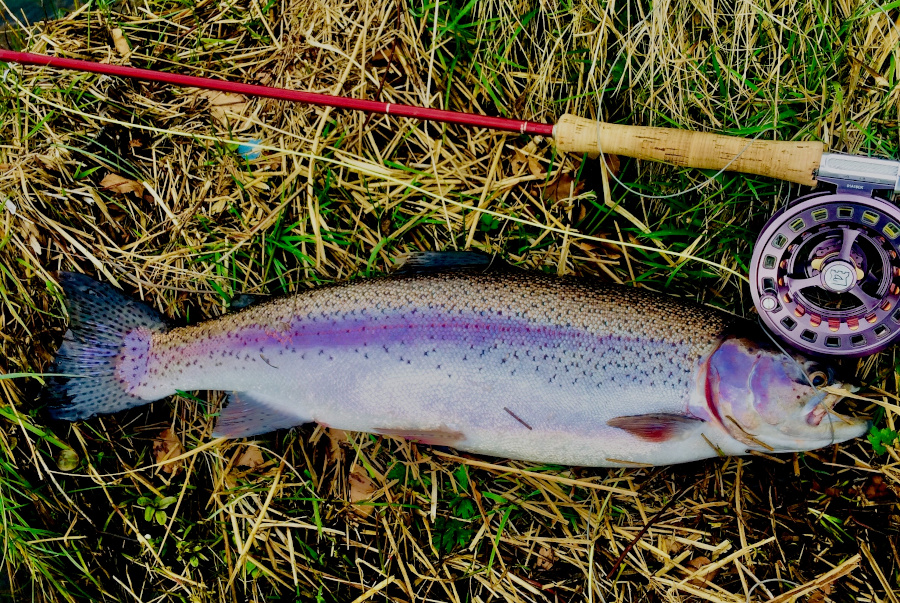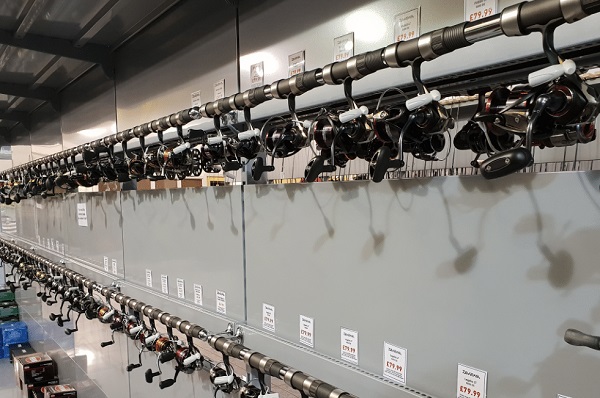Recently invested in some new waders.
We’d like to offer you some simple tips and advice in order for you to maximise your wader’s lifespan ensuring you get the best out of them for seasons to come.
Upon receiving your parcel, open it carefully. A knife can pierce through the packaging and into the waders, so please be mindful of this. A good fit is crucial for the continued performance of your waders.
Take a seat and try them on with appropriate clothing underneath. Try not to wear cotton-based trousers such as jeans under the waders as these can be restrictive in your movement and can often have small metal studs that could damage the tape seams. A breathable, soft layer which keeps you warm is the best option. Wear thicker socks like you would whilst out fishing.
A word of caution: Out the box, and once on and strapped over your shoulders, the waders might look great on you, nice length, feel comfortable and be almost tailored to your body whilst standing. This is actually the biggest issue with wader sizing and these waders are potentially too small. Waders should be a touch loose and baggy. They should feel a tiny bit too long, a bit too wide around the chest and legs but not so baggy there is a lot of material around the upper inseam as this can act like a drogue in faster water and is dangerous.
You should be able to kneel down on one knee and also lift a knee to 90 degrees whilst standing. You should not feel any pressure/strain around the waders at all whilst doing these tests. This is especially the case in Gore-Tex and many other breathable waders as these are not designed to stretch. Neoprene waders, however, have a little more lee-way for stretch but it is still not ideal in preserving the stitching/seams.
If the waders you have purchased are stockingfoots, then try them on with boots. If the neoprene feet are too small you will be uncomfortable and your toes may wear weak spots into the neoprene. Too big and these socks will crease inside your boot and be uncomfortable and also weaken the waterproofing.
Additionally, if you have a set of stairs at home, try walking up and down them with your waders and boots on. Any tight spots can mean stretched seams after even your first outing and they will no longer be waterproof and warranty will not cover this damage. – That’s money down the drain.
If they are the wrong size, simply box them back up and get in touch with us.
Great, so your waders fit… Now what… Think Aftercare:
Storage
After use it can be so easy to put your waders in the boot of the car and not get round to taking them out for a day or two, the waders are wet, and your car is warm creating the perfect humid environment for bacteria to grow. They must be dried or mildew/mould will grow and weaken the materials, sometimes lifting the tape on seams and causing what looks like staining. Regardless of how much you clean this stained area, it will appear dirty, this is because the bacteria have actually eaten away at the laminations of the material so it can never look like it was before. This weakening will affect the integrity of the waders and you will no longer be happy with your waders, just a couple of days can be all it takes for mildew to set in.
Additionally, improper storage voids warranty by most manufacturers so hang them up to dry as soon as possible by the straps or hang tag if provided, in a ventilated room to air dry, preferably not in direct sunlight for long periods of time and certainly not on the radiator or near a fireplace. Once they are completely dry on the outside, turn them inside out, sweat alone can make the waders damp inside and cause mildew to form inside. Dry inside and out and you will have a long life pair of waders. Remember, don’t make the mistake of leaving them wet and dirty in the boot of your car.
Keep them clean:
Cleaning your waders, aids the breathability of most waders. So even if your waders look clean but you find that you are uncomfortable in them on a normal day fishing, it might be time to clean them. Cleaning will also provide greater comfort as the waders are more supple, they will look better on you, and obviously benefit personal hygiene.
You can hand wash or machine wash most waders but follow the care instructions provided with the waders to the very best you can.
What can be difficult to understand is what detergent to use. Ideally, a powder detergent and importantly make sure it is non-biological. Some biological liquid detergents have colour and shine enhancers and this is not ideal for waders as the fish can see you easier as light is magnified under the water. Don’t add softeners or sheets of any kind, these are not designed for waders.
If machine washing is recommended by the manufacturer, tie up or remove the straps or even zip them into the pouch, close all zips and always use a delicate cycle with cold water and a cold rinse. Never tumble dry your waders, air dry only using the same technique as already demonstrated (above). If hand washing, be sure to rinse the waders thoroughly to remove any detergent residues before drying.
Future proofing:
Your waders have lasted a season, you’ve cleaned them – why not revive their waterproofing ready for the next season so they are just like new? DWR is referred to in the world of breathable waterproof garments and it is short for Durable Water Repellent Layer. Treated right, this DWR can last several years just like new.
Breathable waders are only breathable if you use the right treatments. Some wader manufacturers will recommend which treatments to use. The 2 most popular are NikWax and Revivex. After washing your waders and rinsing thoroughly, lay them out just damp (not wet) on a flat, clean surface and protect the surrounding area from overspray, cardboard is ideal for this. Follow the instructions on the bottle saturating the outer breathable surfaces of the garment on both front and back with the spray which can pool between the creases. Wipe this pooled treatment in and then evenly dry using a hairdryer at 10-20cm distance. You can leave the waders to air dry now, but the gentle heat from the hairdryer is what helps the treatment bind to the fibres in the waders.
Some treatments may say to use the tumble dryer, we would suggest this is a mistake specifically to waders. Do not overheat areas with the hairdryer, work past them and come back to them once cool again. The entire pair of waders should now look dry. A good test is to flick a little water on the surface of the waders and if it beads and rolls off then you have successfully re-proofed the DWR of your waders. Heavily used or rubbed areas of the waders may need to be treated twice. These areas include belt areas and the crotch/inseam.
Overwintering:
When storing your waders for a longer period of time eg Winter, the best way to do this is to make sure they are completely clean and dry, loosely roll up without bunching them uptight, store indoors or if the shed is not damp up high out the way of mice etc. Don’t store them in an airtight container.
Try not to hang your waders in any way for longer periods of time. The reason for this is that the areas that the straps meet the waders can become stressed. This is also the case when hanging from the boots (if your waders are boot foot), the integrity of the boots and seams attaching them will diminish even with this lightweight suspended off them for months. If you can find a similar circumstance to laying them gently over the back of a chair with all the weight suspended then this is best.





